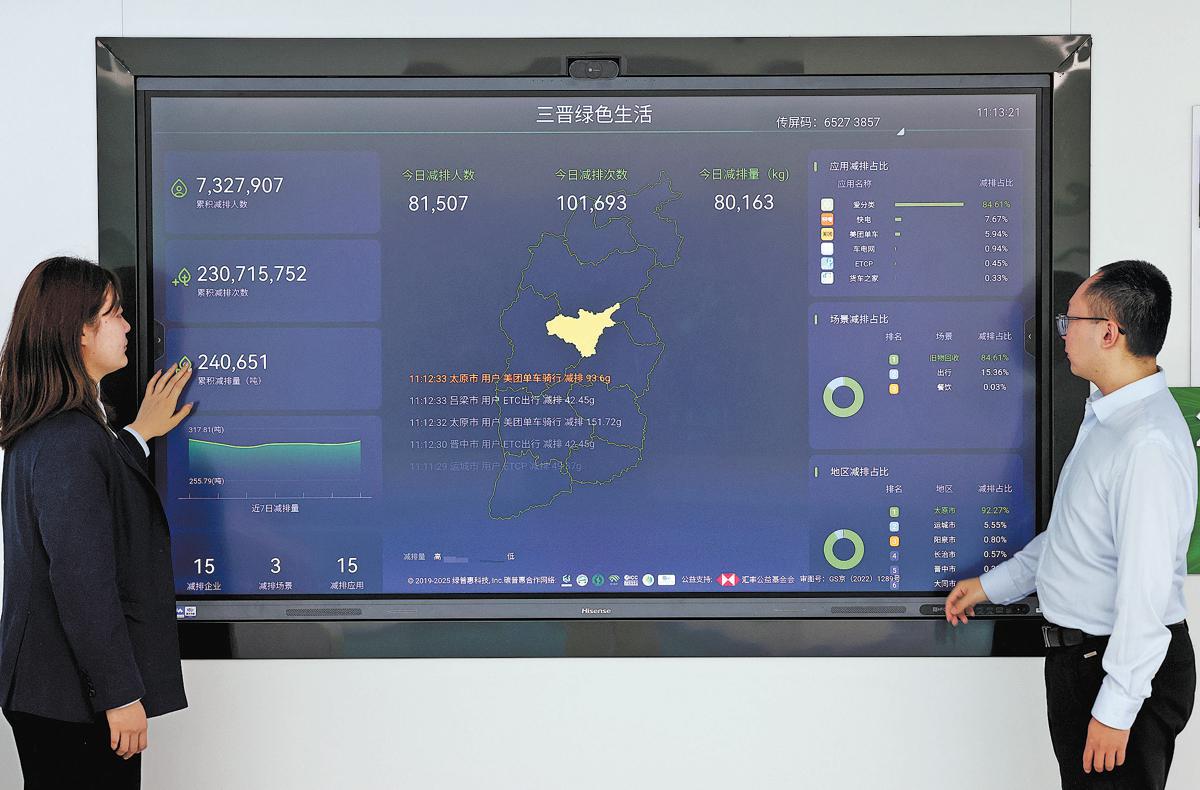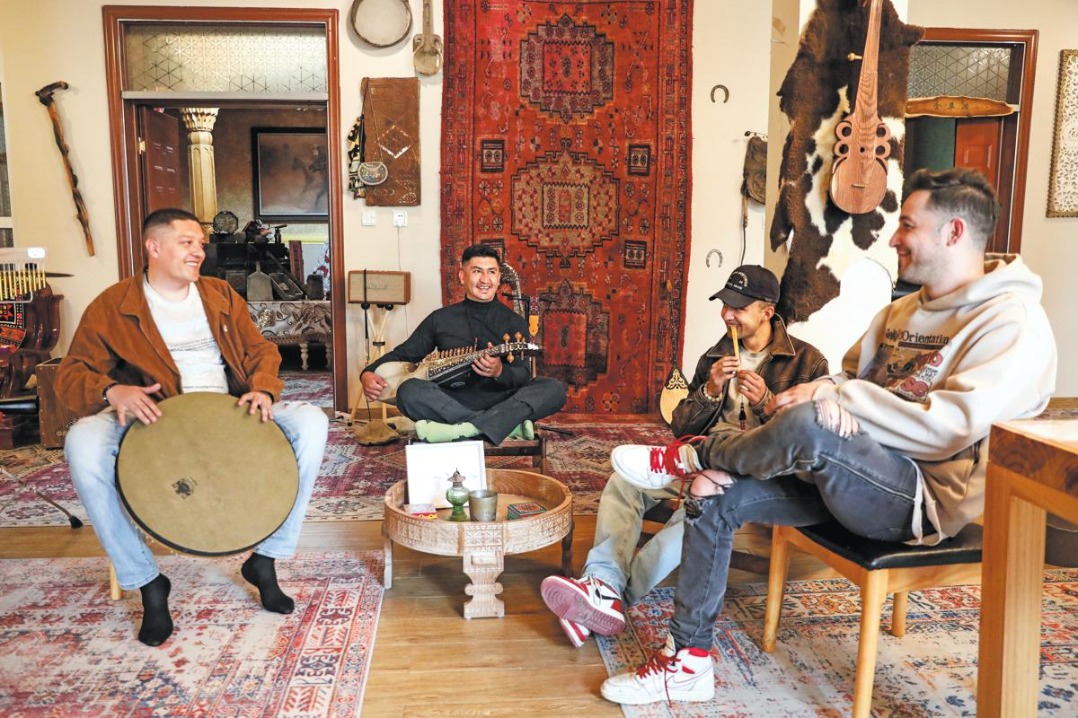Low-carbon lifestyles gain extra credit
Mini programs incentivize public to go green in their everyday actions






Shanxi success
A similar mini program named Sanjin Green Living, launched in September 2022 and encompassing the entire population of Shanxi province with almost 34.5 million people, has also been a success.
Since going live, the Shanxi mini program has engaged over 7.3 million users, and their low-carbon activities have collectively led to a reduction of roughly 240,700 metric tons in carbon dioxide emissions, according to Shanxi Green Trading Center Co, the operator of the mini program.
Launched in 2012 by Shanxi provincial authorities, the center is tasked with overseeing carbon trading in the province.
Liu Zelong, director of the center, said there was a lot of preparation for carbon trading in Shanxi before the national carbon trading program came into effect in July 2021, including drafting trading rules, as well as conducting carbon footprint verification and carbon accounting.
"Our involvement in these initiatives significantly deepened our understanding of carbon-related processes. By the time Sanjin Green Living commenced operations, we had a comprehensive grasp of the mechanism," he said.
However, he said the center was still confronted with a lot of challenges in promoting the mini program.
"This mini program aims to instill in citizens the concept of green travel and green consumption because many people didn't have this concept before. Going from nothing to something, this is the most difficult aspect," he said.
Liu highlighted that Shanxi authorities have successfully utilized various opportunities to promote the mini program. At a conference centered on energy conservation in public institutions held in Taiyuan, the capital of Shanxi, last year, all employees in these institutions were encouraged to adopt the program.
Thanks to a fund of 4 million yuan provided by the Shanxi Provincial Department of Ecology and Environment, the center also introduced incentives to promote the program. The carbon credits earned through the mini program can be exchanged for prizes including prepaid supermarket gift cards and drinks, according to Liu.
The platform has attracted businesses to contribute prizes, including bakeries, tourist companies, coffee stores and grain producers.
- Y-20 planes deliver Air Force freshmen
- Guizhou sorghum harvest fuels baijiu production
- Beijing issues geological disaster warnings and flood control responses
- Rice paddy art celebrates history and ecology in Shandong
- European scholars praise research environment in China
- Northern China universities secure spots at 2025 World Humanoid Robot Games

































